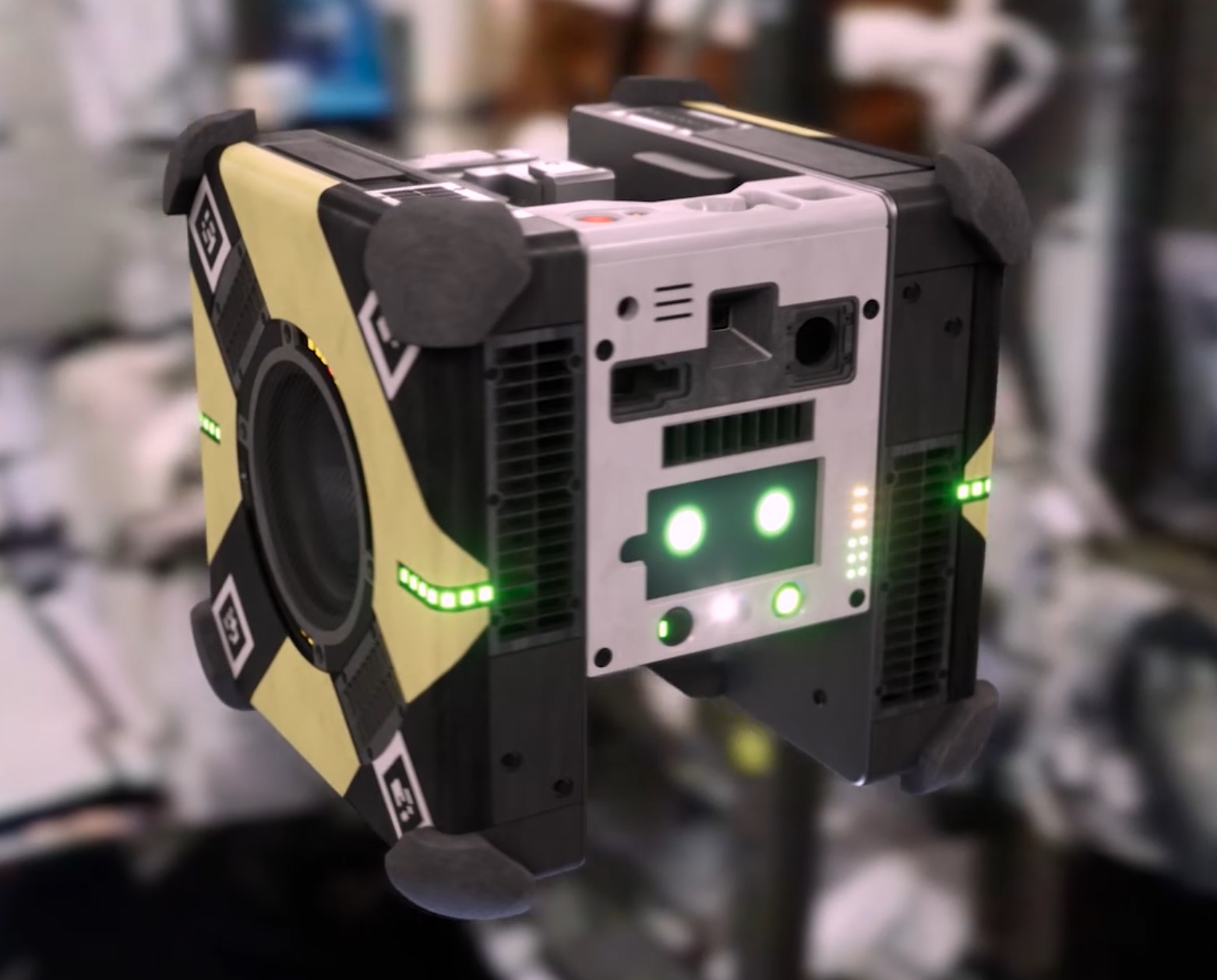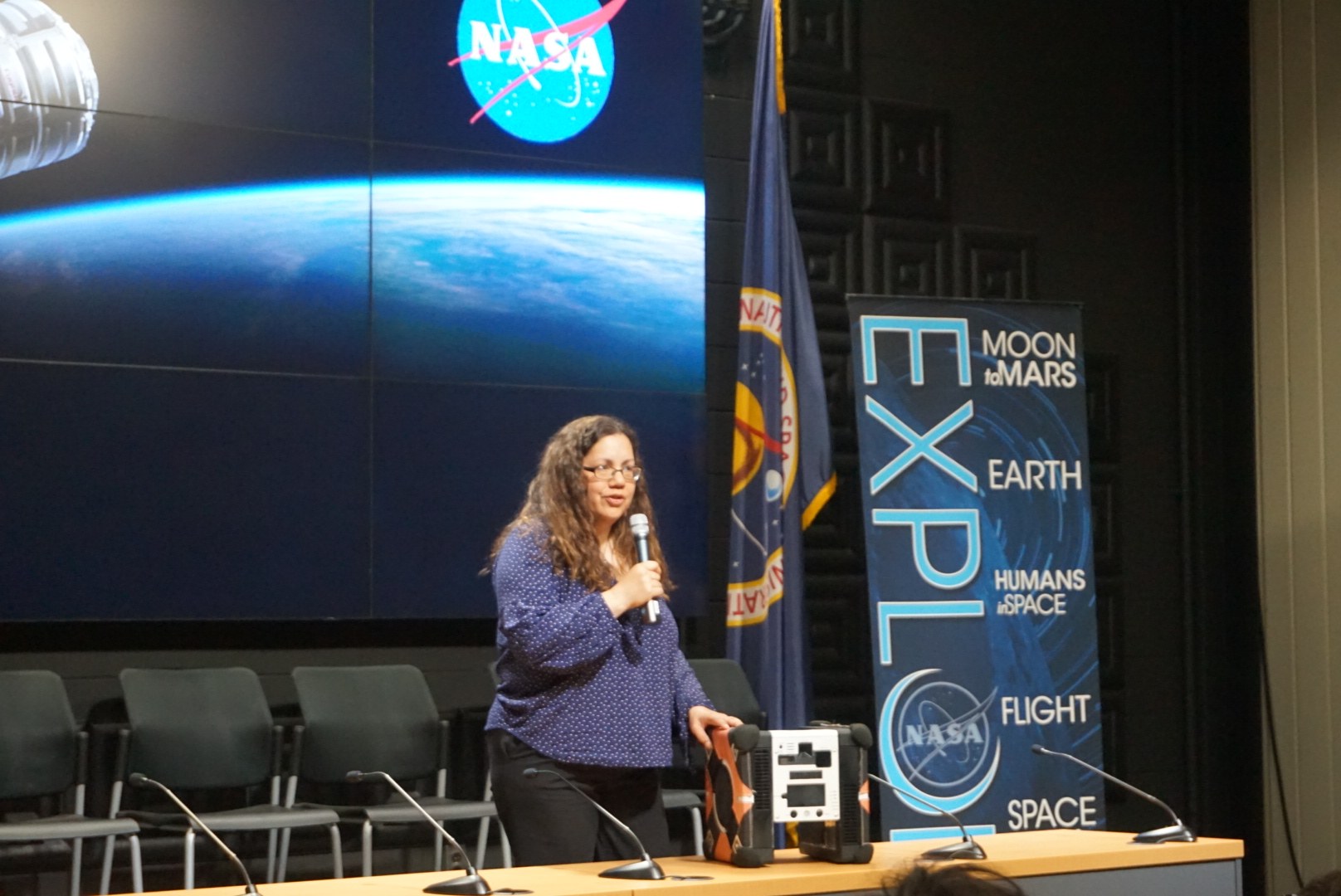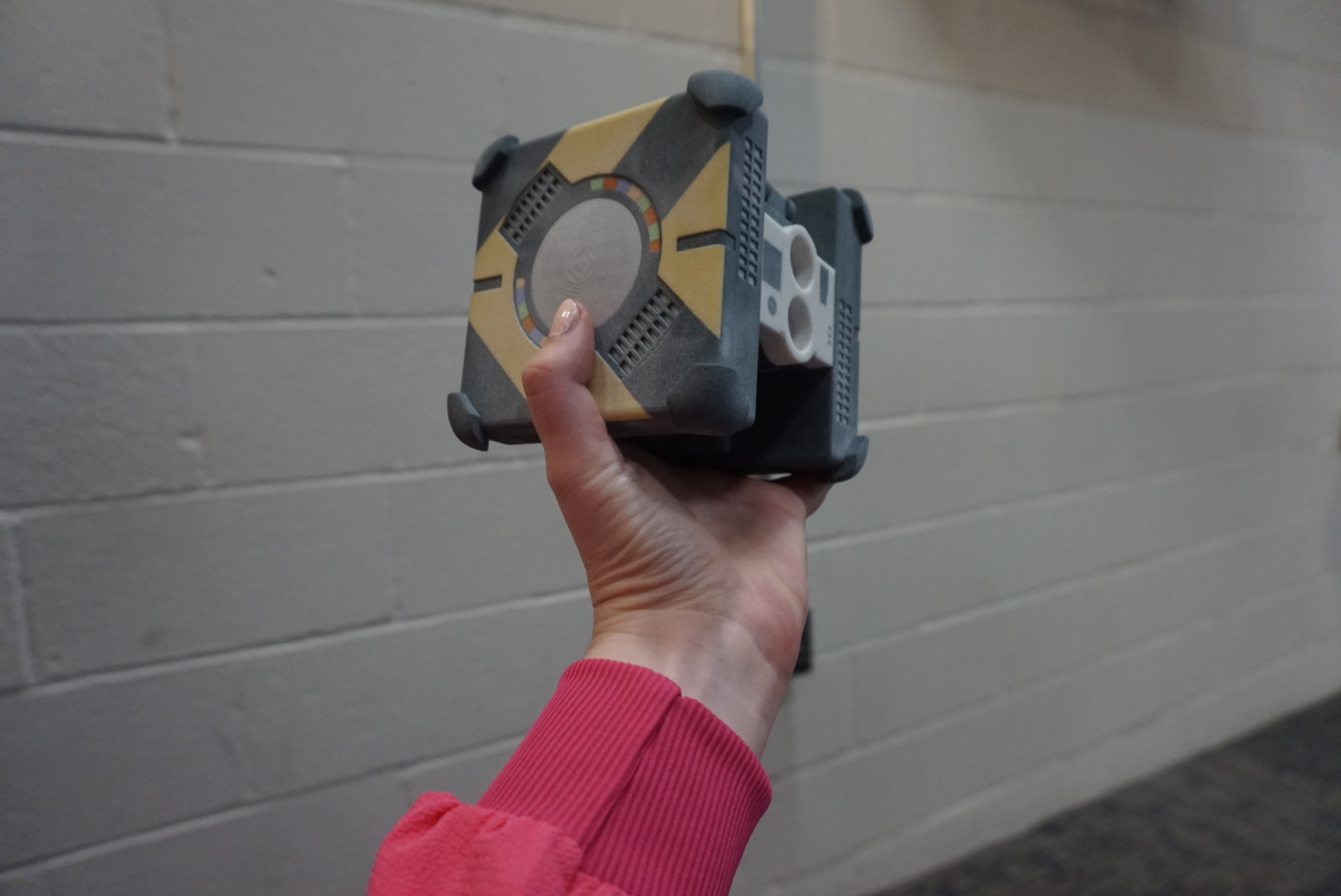
Meet the Astrobees! These Tiny, Cube-Shaped Robots Have Arrived in Space
These cube-shaped little robots are as cute as they are helpful.
Last week, Northrop Grumman's Antares rocket launched thousands of pounds of scientific investigations, hardware and supplies to the International Space Station. Arriving at the space station just a couple days later, the payload contained two little helper robots called Astrobees.
Astrobees look like the robot companions you might expect to find in a science fiction film — they're small (about the size of a bread loaf), cube-shaped, free-flying little machines. But the Astrobees are entirely functional bots that have joined the crew aboard the space station, and, in the near future, they will be joined by a third bot. For now, the two Astrobees currently on the station will practice helping astronauts with routine tasks. One of the many purposes of the Astrobees is to reduce the amount of time that astronauts have to spend on mundane tasks like finding lost pieces of equipment.

The little robots can also each carry multiple science payloads, collecting data as they float around the station, pushed forward by a propulsion system made up of electric fans. They can have sensors attached to them that will detect radiation, carbon dioxide and more. The Astrobees also have built-in cameras that can help them to "see" and navigate around the space station. The robots each have a "perching arm," which allows them to grab handrails or grab and hold items. However, they have limited capability of grabbing things, as their arm is not very dexterous," Maria G. Bualat, Astrobee project manager at NASA's Ames Research Center, said at a prelaunch news conference on April 16. The Astrobee robots function autonomously and can also be controlled either by the astronauts on the space station or by flight controllers and researchers back on Earth.
Related: Huge Mars Robot Armed With Laser, Cameras, Curiosity (Infographic)

The Astrobees, equipped with a built-in camera and their "perching arm," are also designed to help maintain the space station; and they, or a similar robot, could one day have the capacity to take care of and maintain future spacecraft. Presently, the little robots' built-in camera will help crewmembers and ground controllers to see problems inside the space station remotely, Bualat explained, adding that this camera could also be used to survey crew activities. The Astrobee team hopes that this capability will grow. On future spacecraft, robots like the Astrobees could someday monitor the ship for problems and maintain onboard systems, even if astronauts are not present.
In addition to transporting experiments on the space station and helping to maintain the station, the Astrobee robots will help researchers to learn more about how astronauts and robots can work together in space, Bualat said. This could inform future, longer-duration missions where more advanced robots might assist and cohabitate with human astronauts. When looking at the Astrobees, it's clear to see why researchers might be interested in how astronauts interact with them: They look like futuristic, sci-fi companion robots, and they even have names.

According to Bualat, the yellow Astrobee is named Honey, the blue bot is named Bumble, and the green bot, still on Earth, is named Queen. The bots feature a touch screen with glowing "eyes" and blue indicator lights that glow to signal to the astronauts whenever their built-in microphone is activated, so that the astronauts know if the Astrobees can "hear" what they are saying.
Get the Space.com Newsletter
Breaking space news, the latest updates on rocket launches, skywatching events and more!
The Astrobees are designed to take over for the SPHERES (Synchronized Position Hold, Engage, Reorient, Experimental Satellite) — free-flying satellites that have been roaming the space station testing hardware and software for Earth-based researchers.
Join our Space Forums to keep talking space on the latest missions, night sky and more! And if you have a news tip, correction or comment, let us know at: community@space.com.

Chelsea “Foxanne” Gohd joined Space.com in 2018 and is now a Senior Writer, writing about everything from climate change to planetary science and human spaceflight in both articles and on-camera in videos. With a degree in Public Health and biological sciences, Chelsea has written and worked for institutions including the American Museum of Natural History, Scientific American, Discover Magazine Blog, Astronomy Magazine and Live Science. When not writing, editing or filming something space-y, Chelsea "Foxanne" Gohd is writing music and performing as Foxanne, even launching a song to space in 2021 with Inspiration4. You can follow her on Twitter @chelsea_gohd and @foxannemusic.
